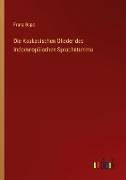- Start
- Pumping Yb:YAG thin-disks at 940 nm and the Zero-Phonon-Line
Pumping Yb:YAG thin-disks at 940 nm and the Zero-Phonon-Line
Angebote / Angebote:
Masterarbeit aus dem Jahr 2013 im Fachbereich Physik - Optik, Note: 1.3, Ludwig-Maximilians-Universität München, Sprache: Deutsch, Anmerkungen: Pumpen von Yb:YAG thin-disks bei 940nm Wellenlänge und auf der Zero-Phonon-Line, Abstract: With the prospect of high-intensity isolated attosecond pulses XUV pump-XUV probe spectroscopy as well as novel methods for controlling atomic-scale currents seem feasible paving the way for new physical, chemical, biological, and medical applications such as attosecond X-ray diffraction, non-invasive imaging and cancer therapy.
To reach these ambitious goals, optical parametric chirped pulse amplifcation (OPCPA) in combination with high harmonic generation (HHG) seems like a promising route. But this approach puts stringent demands on the pump laser driving it. To overcome these challenges Yb:YAG as active laser medium in a thin-disk geometry is often used offering a lot of favourable properties for high power applications with excellent beam quality.
Yb:Yag can be pumped at either 940 nm or, more recently, since the advent of Volume-Bragg-Grating stabilized diodes, at its Zero-Phonon-Line with a wavelength of 969 nm. These two wavelengths excite different transitions in the 5 F 1/2 electronic shell each exhibiting its own assets and drawbacks. This thesis will focus on a comparison between them.
A theoretical model of the conditions in the pumped thin-disk is created. Absorption of the pump light is calculated numerically. Amplified spontaneous emission and thermal effects are considered, too. The structure of the 5 F 1/2 energy manifold is accounted for thus allowing predictions for two different pumping wavelengths at 940 nm and 969 nm. To gauge the accuracy of the model the numerical calculations are compared with measurements conducted at LMU's newly-built Laboratory for Extreme Photonics. A regenerative amplifer is set up to quantify the roundtrip gain at different pumping powers and wavelengths. The temperature of the pumped disk and its deformations as well as the single pass gain are measured, too. All measurements are in reasonable agreement with theory.
After the motivation for this work some basic properties of lasers are introduced. In chapter 3 the basics of thermodynamics and its application to laser gain media, especially Yb:YAG, will be covered. The previous considerations will be numerically applied to the case of a thin-disk regenerative amplifer in the 4. chapter. Additional aspects, like its cavity and nonlinear effects, will be considered, too. Chap. 5 will give a description of the experimental methods and setups used to check the numerical predictions while the raw measured data and its interpratation are stated chap. 6 and 7
Folgt in ca. 10 Arbeitstagen




